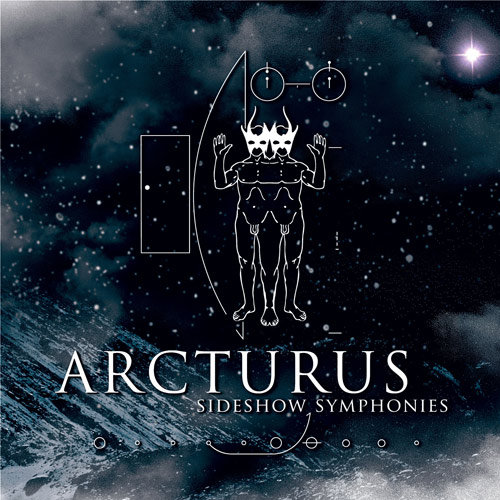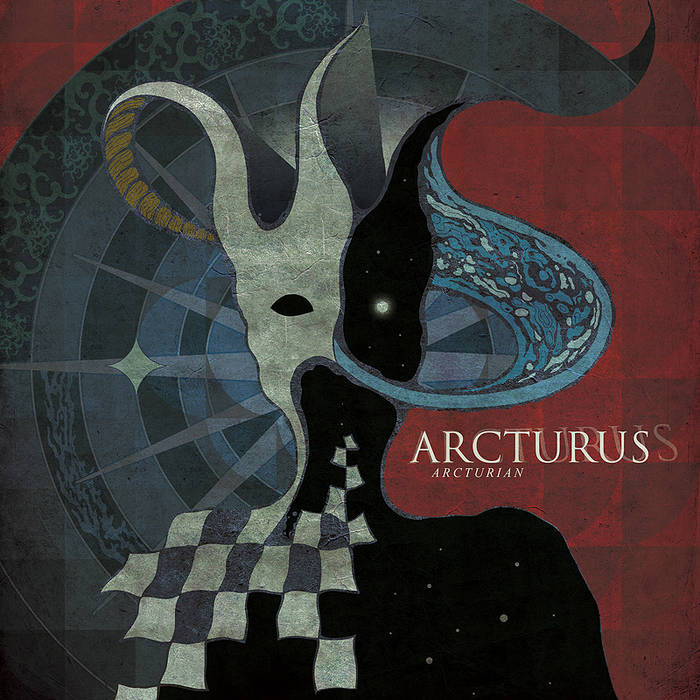Arcturus
The Alchemists of the
Avant-Garde: A Cosmic Descent into the Theatre of Metal
Prologue: Stars Beyond the Fjords
In the arid heart of the Norwegian Black Metal explosion, a movement notorious for its austerity, extremism, and dogmatic rawness, an anomaly emerged. While churches were smouldering and tremolo-picked chords echoed from pine-draped mountaintops, a parallel narrative unfolded in the underground. A constellation was forming an ensemble of visionaries who refused to be tethered to orthodoxy. Arcturus, Latin for "Guardian of the Bear", and one of the brightest stars in the night sky, would become a fitting name for a band that operated far beyond the gravitational pull of convention.
Formed in the early 1990s by Steinar Sverd Johnsen, keyboardist and compositional mind behind Mortem, Arcturus was less a band than a celestial symposium. From its inception, it served as an artistic crucible where the fires of classical composition, Black Metal, theatricality, and science fiction fused into one of the most distinctive bodies of work in extreme Metal history. Over the years, they would become synonymous with avant-garde Metal itself, a term still struggling to contain their multiplicity.
I. Foundations of a Starship: From Mortem to Arcturus
To understand Arcturus, one must begin with Mortem, a Death Metal band formed in 1989 by Steinar Sverd. Although Mortem’s “Slow Death” (1990) demo displayed the brutality typical of the time, Steinar's approach to composition even then hinted at a broader ambition. After a brief hiatus and a reformation in 1991, the band shifted its focus and direction. When Hellhammer (Jan Axel Blomberg) of Mayhem joined the project, the foundations for Arcturus were firmly laid. In 1993, the band released “My Angel”, a two-track EP that marked their debut under the Arcturus moniker. Though still blackened in tone, it incorporated neoclassical piano, melodic structures, and eerie ambience, a distinct departure from their peers. The title track, in particular, foreshadowed the band’s theatrical and operatic future.
By the time “Constellation” (1994) arrived – a semi-official mini-album limited to a few hundred copies – the Arcturus nucleus was solidifying. With contributions from Samoth (Emperor), Garm (Ulver), and Skoll (Ved Buens Ende), the project had effectively become a supergroup. The constellation metaphor was no mere coincidence; each member was a bright star in Norway’s Metal firmament, orbiting a collective will to transcend genre.
II. Black Metal Theatre: “La Masquerade Infernale” (1997)
Though “Aspera Hiems Symfonia” (1996) is often regarded as their debut full-length, it remains, in many ways, a transitional work. It retained traces of Black Metal, icy tremolos, shrieked vocals, but they were already being diluted by keyboards, progressive structures, and layered atmospherics. It was “La Masquerade Infernale” (1997), however, that would serve as Arcturus’s true statement of intent.
On “La Masquerade…”, Arcturus obliterated all genre limitations. The album was a surrealist opera painted in baroque tones and starlit brushstrokes. Garm, abandoning his blackened screech, adopted a deep, theatrical croon reminiscent of David Bowie or Peter Gabriel. The album reeked of decadence: songs like “The Chaos Path” and “Alone” (featuring a poem by Edgar Allan Poe) were exercises in dissonance and elegance, as if Arcturus were composing from the drawing rooms of a ghost-ridden Victorian manor aboard a spacecraft. Musically, the album drew from 20th-century classical composers (Stravinsky, Bartók), gothic rock, progressive Metal, and dark cabaret. Every track felt like a scene in a grand performance. This was no longer “Metal” in the traditional sense. Arcturus had constructed a new idiom: Avantgarde Metal as high art. Though critically polarising at the time, “La Masquerade Infernale” would later be regarded as a genre-defining milestone.
III. The Politics of Departure: Line-up Shifts and Sonic Renewal
Between 1998 and 2002, Arcturus’s momentum was disrupted by internal flux. Garm departed the band, citing artistic exhaustion and his commitment to Ulver’s electronic metamorphosis. His exit left a gaping void, vocally and ideologically. Garm was not only a singer but a tone-setter: charismatic, cryptic, and aloof.
Into the void stepped Øyvind Hægeland (Spiral Architect), a technically adept progressive Metal vocalist whose time with Arcturus was brief and marked by tension. He contributed to live performances and early sessions of their next album but eventually withdrew, unable to fully integrate into Arcturus’s orbit. It was Simen Hestnæs, known as ICS Vortex, who would ultimately inherit the vocal mantle. Fresh from his stint in Dimmu Borgir, Vortex brought an operatic power, theatrical flair, and a touch of madness that fit Arcturus like a cosmic glove. His arrival coincided with the completion of “The Sham Mirrors” (2002), arguably the band’s most cohesive fusion of progressive Metal, industrial textures, and lyrical mysticism.
IV. “The Sham Mirrors”: Cosmic Palimpsests and Post-Human Dreams
With "The Sham Mirrors", Arcturus pushed further into cybernetic territory. The album was drenched in synths, programmed beats, and futuristic concepts. Its cover, a space station wrapped in an eclipse, reflected the music’s thematic drift toward cosmology, existentialism, and technology. Tracks like “Kinetic” and “Nightmare Heaven” pulsated with mechanical rhythms but retained Arcturus’s signature theatricality. The lyrics moved into philosophical and post-humanist realms: questions of identity, entropy, and dreams recur throughout. If La Masquerade was a descent into the underworld, The Sham Mirrors was its celestial counterpart, a sojourn into the void. Interestingly, “Sham Mirrors” retained emotional resonance despite its cerebral sheen. Vortex’s vocals provided human warmth, and Sverd’s keyboard arrangements, equal parts Wagner and Vangelis, ensured grandeur was never lost. Critics hailed the album as a masterpiece; fans, once divided, came together in admiration.
V. The Spectre Fades: Hiatus and Internal Collapse
Following Sham Mirrors, Arcturus entered a turbulent period. Drummer Hellhammer became increasingly occupied with Mayhem and other projects. Vortex returned to Dimmu Borgir full-time. The band limped into the mid-2000s with difficulty reconciling its fragmented identity. Still, in 2005, the band managed to release “Sideshow Symphonies”. It was a subtle, at times muted, workless grandiose, more introspective. The production drew criticism for its thinness yet tracks like “Hufsa” and “Shipwrecked Frontier Pioneer” demonstrated thematic consistency and lyrical brilliance. It was Arcturus in a quieter key, surveying the ruins of its own empire. Soon after, the band announced its dissolution. For many, it felt like the end of an era. The farewell concert, later released as “Shipwrecked in Oslo”, was part triumph, part elegy. Arcturus had traversed the stars and burned brightly, only to collapse into themselves like a dying star.
VI. Resurrection and Reignition: “Arcturian” (2015)
Ten years later, against all odds, Arcturus returned. With the original core intact, Sverd, Hellhammer, Skoll, Vortex, and Knut Magne Valle, the band released “Arcturian” in 2015. The album was not a nostalgic rehash but a genuine evolution. “Arcturian” was explosive, chaotic, yet carefully composed. Tracks like “The Arcturian Sign” and “Crashland” shimmered with old magic and new fire. Vortex’s vocals were more dynamic than ever-operatic, guttural, whispering, and declamatory within the span of a verse. Sverd’s compositions bore the weight of two decades of experience; no note felt wasted. Lyrically, the album revisited familiar themes, madness, flight, dreams, but with the tone of weathered visionaries rather than theatrical romantics. There was pain, depth, and beauty. Though the album didn’t receive the same reverence as La Masquerade or Sham Mirrors, it reaffirmed Arcturus’s relevance in a post-modern Metal landscape.
VII. Myth and Mechanics: Thematic and Aesthetic Significance
What separates Arcturus from the many bands experimenting with “weirdness” is their philosophical cohesion. Their aesthetic is not merely superficial or gimmicky, it is rooted in metaphysical tension. Themes of insanity, cosmology, Death, transformation, and theatre recur across albums like refrains in a symphony. They are deeply Nietzschean in their embrace of chaos and aesthetic will. Arcturus doesn’t reject the Dionysian; it revels in it. And yet, their work is also Apollonian, structured, composed, and intentional. The result is an oeuvre that resists binary interpretation: light and dark, reason and madness, starlight and abyss. Visually, Arcturus complements this duality. Their costumes, album art, and videos oscillate between science fiction and gothic burlesque. It is theatre as ontology, a self-aware performance of artistic being.
Epilogue: A Final Curtain Call in the Ether
Whether Arcturus will return, is
uncertain. Their output is sporadic, their lives scattered among other
projects, their music perhaps too complex for wide consumption. But to those
attuned to their frequency, Arcturus remain one of the most important bands in Metal
history, not for what they screamed, but for what they dared to whisper in
alien tongues. Their story is not one of commercial triumph, nor even of scene
solidarity. It is the story of visionaries who looked to the stars, not for
salvation, but for self-understanding. In the theatre of the cosmos, Arcturus
remain ever in motion, drifting between madness and magnificence, forever
defying gravity.








Comentários
Enviar um comentário